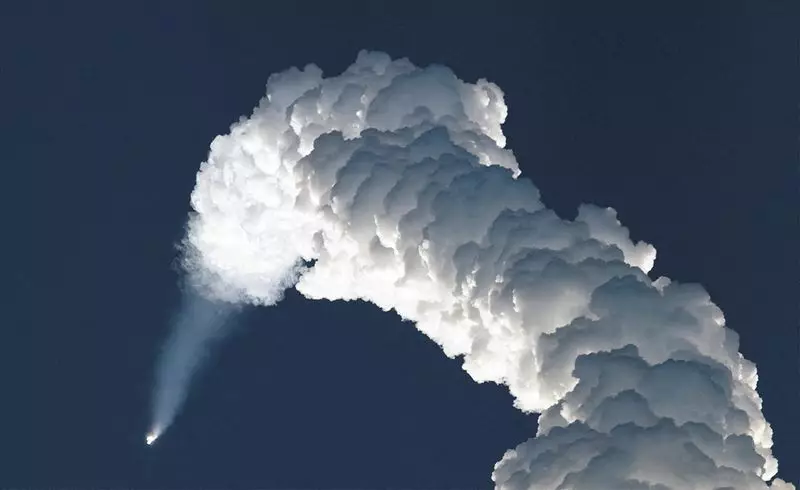In recent years, the low Earth orbit (LEO) satellite launch market has seen explosive growth driven mainly by demand for satellite constellations like SpaceX’s Starlink. This surge has prompted aerospace giants to reassess their strategies and product offerings, particularly in light of SpaceX’s significant presence. Acknowledging this competitive pressure, United Launch Alliance (ULA), a joint venture between Boeing and Lockheed Martin, is taking decisive steps to enhance its capabilities and better position itself in this lucrative domain.
ULA’s CEO, Tory Bruno, recently announced the company’s intent to upgrade its Vulcan rocket with a new model specifically designed for the LEO market. After completing an extensive trade study, ULA concluded that modifications to the Vulcan would allow it to carry a greater mass to orbit, thereby enhancing its competitiveness against SpaceX’s offerings. This approach signifies ULA’s strategic pivot toward meeting evolving market demands and addressing threats from innovative rivals.
The Vulcan rocket itself is powered by engines from Blue Origin, Jeff Bezos’ aerospace company, and has already launched twice this year. Initially developed to meet the needs of U.S. Department of Defense missions, the Vulcan is now being tailored to attract commercial customers, particularly in the burgeoning satellite internet sector. Bruno hinted at interesting configurations for the Vulcan, including a potential “Vulcan Heavy” setup featuring multiple boosters, and other unique designs that emphasize adaptability in propulsion placement.
SpaceX’s Starship program has been primarily designed for ambitious crewed missions to destinations like the Moon and Mars. However, the company has also set its sights on ramping up the deployment of Starlink satellites. This dual focus puts additional pressure on competitors like ULA and Amazon, who are eager to establish rival satellite networks. As SpaceX races to expand its satellite constellation, both ULA and Amazon are intertwining their mission goals to keep pace.
Bruno predicts that ULA will be ready with its upgraded Vulcan rocket before SpaceX’s Starship can start commercial LEO satellite launches. This development timeline could give ULA a critical window to assert itself before the full impact of Starship is felt in the market, which Bruno estimates could be several years away.
A key part of ULA’s strategy comprises its collaboration with Amazon to launch Kuiper internet satellites. These contracts not only highlight ULA’s commitment to securing operational missions within the competitive LEO sector but are also pivotal in Amazon’s effort to challenge the dominance of SpaceX’s Starlink. By channeling resources into their Vulcan missions, ULA aims to establish a reliable launch cadence that can attract further business.
In response to the growing LEO launch demand, ULA has set ambitious plans to conduct eight Vulcan missions and 12 Atlas V missions in the coming year. The pricing point for the Vulcan rocket beginning at approximately $110 million positions it competitively against SpaceX’s Falcon 9 services. This pricing, coupled with ULA’s strong order book of roughly 70 missions, underscores the company’s urgency in streamlining its launch operations.
Despite ULA’s positive outlook, the landscape remains fraught with challenges. SpaceX’s aggressive testing methodology—where continual upgrades and experimental approaches are leveraged—means that traditional aerospace companies like ULA must adapt quickly. ULA tends to finalize its rocket design before launch, contrasting sharply with SpaceX’s iterative approach that emphasizes rapid prototyping and testing.
Moreover, ULA is attracting attention as a potential acquisition target, with rumors circulating about interest from both Sierra Space and Blue Origin. Such speculation might influence ULA’s strategic decisions moving forward, as it determines how best to navigate a landscape defined by both public and private sector, innovation-focused competitors.
The transformation of ULA’s Vulcan rocket represents not merely a response to market pressures but a broader shift in the aerospace industry’s dynamics. With the LEO market booming, ULA’s efforts could position it more favorably against nimble players like SpaceX and emerging challengers. Ultimately, the success of these initiatives hinges on the ability to adapt to new technologies, foster partnerships, and most importantly, deliver payloads to orbit reliably and economically. As the competitive landscape continues to evolve, stakeholders will be watching closely how ULA navigates these turbulent yet opportunistic waters.

